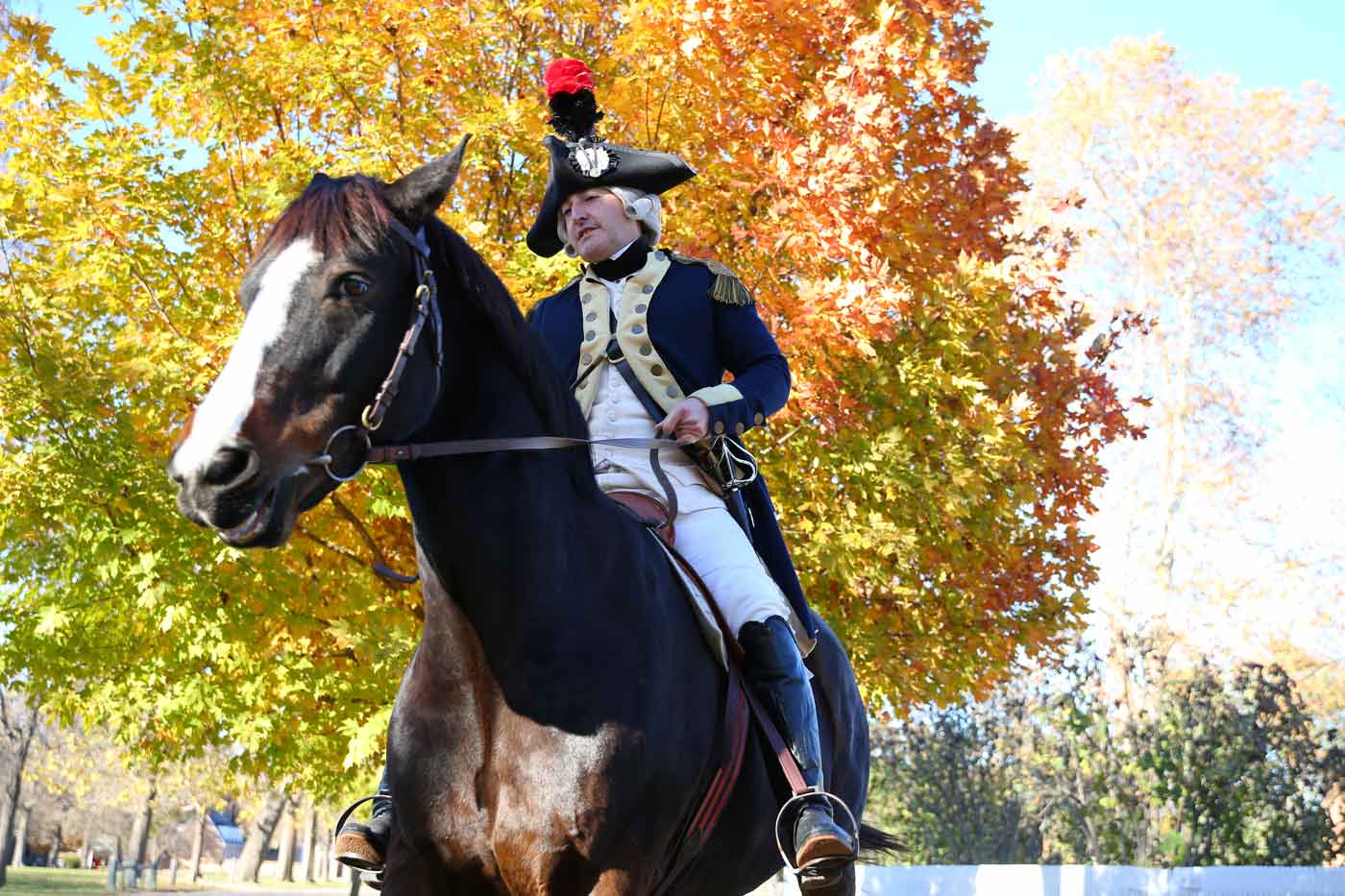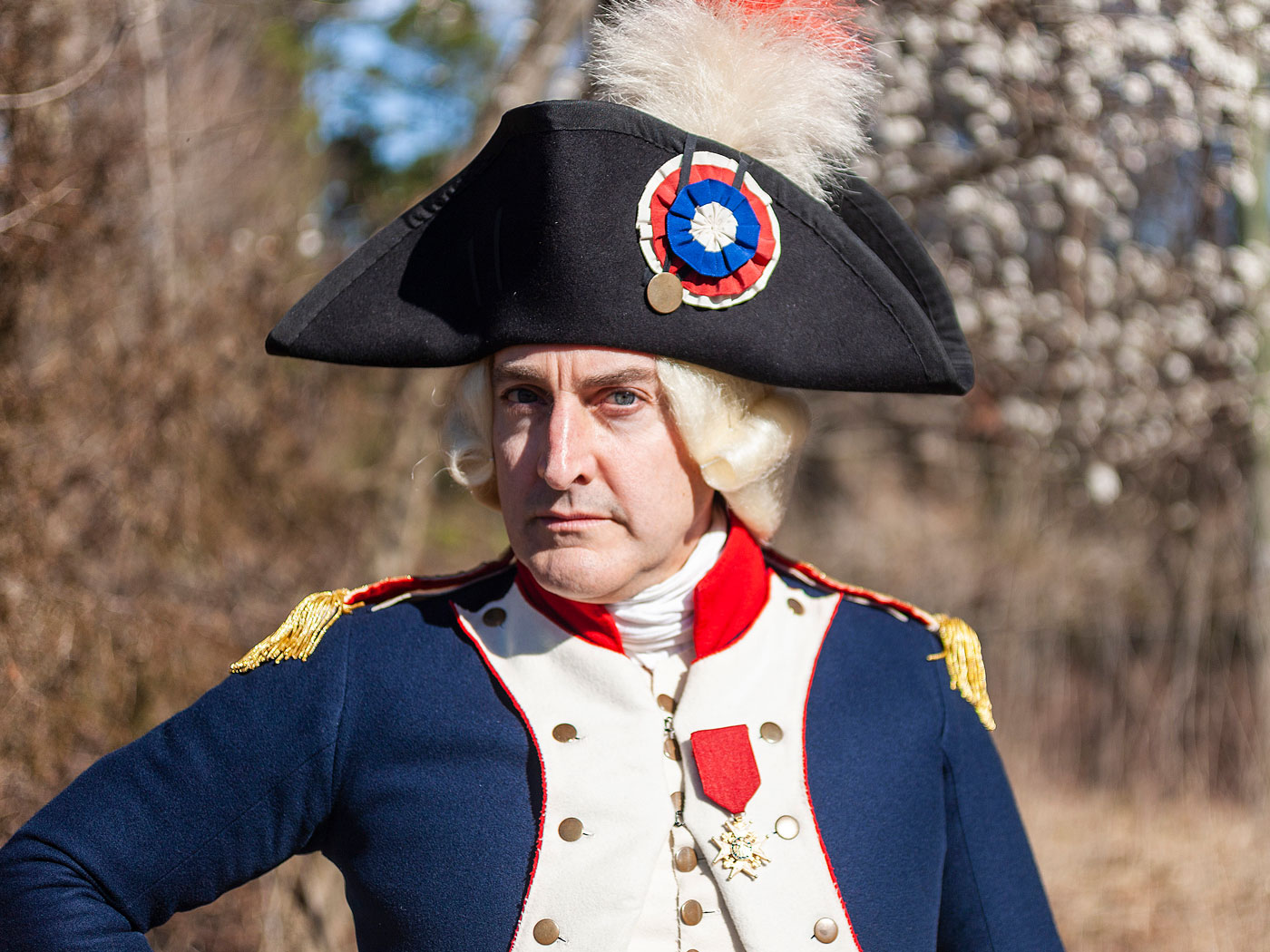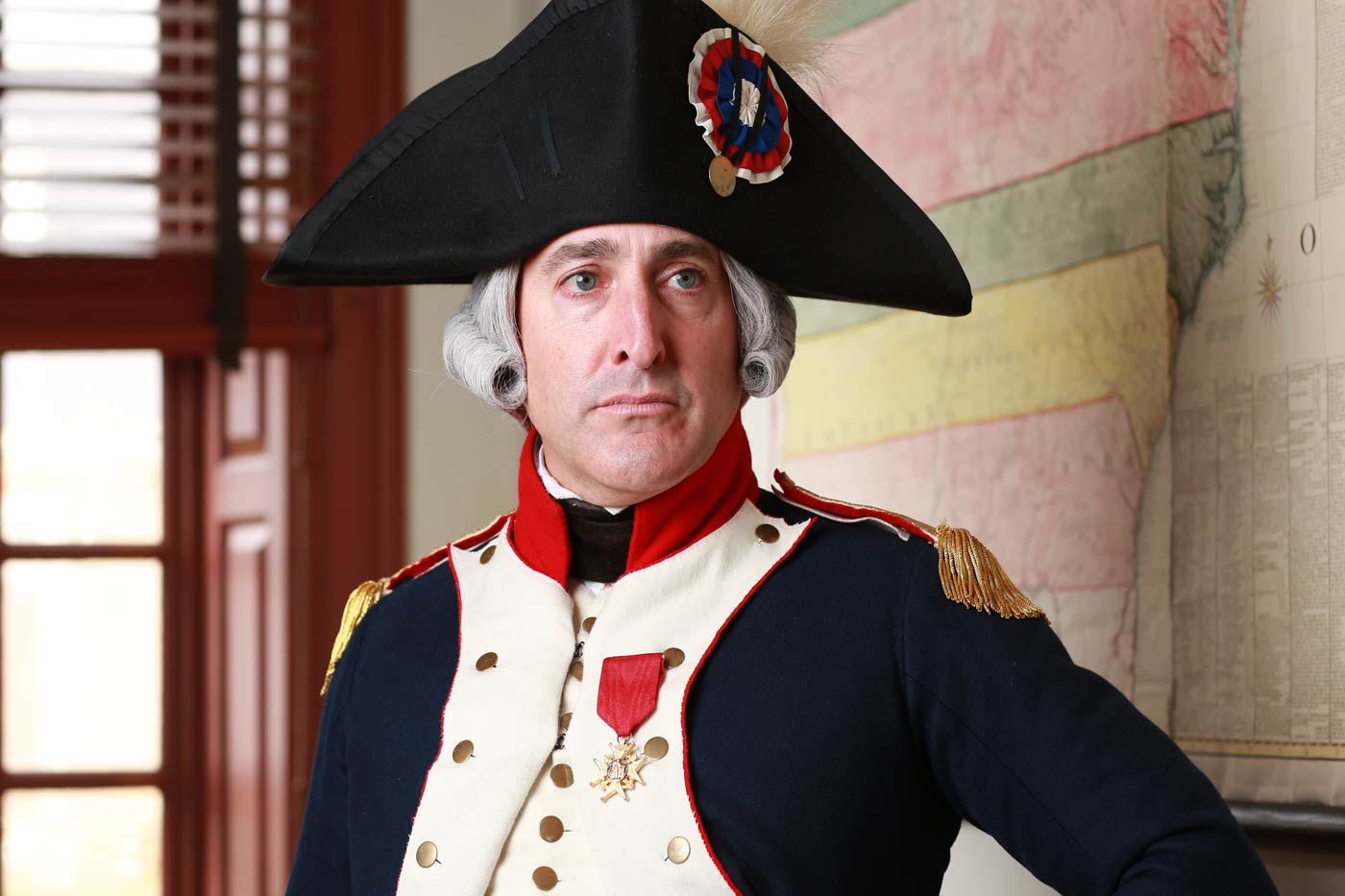The Marquis de Lafayette was a French aristocrat who volunteered his services to General Washington and the American cause, to help win Independence for the United States of America. The name Lafayette is widely recognized — perhaps where you are from you have a town, street, county, or park named after him. Or maybe you have been so fortunate as to see the hit Broadway play Hamilton and that is where you recognize the name. Well, even though the name is familiar, perhaps the details of the life of this brave Frenchman are not familiar to you. Here are 3 facts about the Marquis de Lafayette, America's Favorite Fighting Frenchman.
1) A very young General
The Marquis de Lafayette was an 18-year-old, newly promoted captain in the French army when he met with the American representative, Silas Deane, in Paris in 1776. Deane was sent by the American government to find experienced and capable officers to help fight for the Independence of the United States. After hearing of this, Lafayette decided to dedicate himself to this cause of liberty. Baron de Kalb, one of the officers that Deane had given a military commission to, introduced Lafayette to Deane and despite the youth of the young Marquis, Deane granted him a military commission as a Major-General in the Continental Army.
Now, in the United States Army, no officers can be commissioned unless it is endorsed by Congress. Unfortunately, many of these foreign "adventurers" who had received commissions from American representatives abroad, did not possess the experience or knowledge of military matters that the newly formed Continental Army needed. So, you can imagine that upon Lafayette’s arrival in Philadelphia, after crossing the Atlantic, disobeying his King for going, departing his young wife and child, that he was not prepared to take “no” for an answer.
Upon meeting with Congress, they informed him that they did not need or even want his help. No doubt because of the others that had proceeded him, his age, and lack of experience in military matters. Well, after risking so much, Lafayette finally told Congress that he would gladly serve as a private soldier in the ranks and at his own expense! With that great show of zeal and commitment, Congress endorsed his commission and made him a Major-General on 31 July 1777. Lafayette was 19 years old.

2) Nearly stopped short.
The newly commissioned Major-General Lafayette would meet General George Washington for the first time at City Tavern in Philadelphia on 31 July 1777. To say that Lafayette was star struck is an understatement. Lafayette saw him immediately as very much a father figure and commented on “the majesty of his face and figure.” Washington would take Lafayette aside and speak with him in private, explaining that there was no division for him to command but he would welcome him to join his “military family” as part of his staff alongside Alexander Hamilton and John Laurens. Lafayette was overjoyed by this and readily accepted.
Washington had come to Philadelphia to defend the city from being taken by the English under General Howe. On the morning of Sept. 11, 1777, the Battle of Brandywine began. Though Lafayette had been alongside Washington all day, when he saw an opportunity to distinguish himself, he requested that he might join General Sullivan’s division which was on the right flank and preparing to receive the enemy. Soon the enemy forces under Lord Cornwallis began their attack and despite brave resistance, the American division began to crumble. This was the first time that Lafayette was under fire, though he behaved like a seasoned veteran. Lafayette leapt off his horse to better encourage the soldiers and urge them on. It was in the middle of this fierce action that Lafayette's left leg below the calf was hit with a musket ball and it passed right through. Blood began to poor out of the boot and Lafayette’s aid Colonel Gimat helped him to mount his horse again. Washington's personal physician, Dr. John Cochran, applied a quick field dressing to stop the blood and Lafayette was able to stay active as the army fell back in retreat 12 miles. At Chester, Lafayette was joined by Washington again and finally was able to have his wound dressed properly. Lafayette had received his baptism of fire and had performed exceedingly well.

3) Prone to Seasickness
In order for the Marquis de Lafayette to participate in the war for American Independence, he was going to have to get on a ship and cross the Atlantic Ocean. One thing that Lafayette did not like to do was to sail on ships because he was prone to mal de mer, or seasickness, but his enthusiasm for American freedom made him overcome this and he purchased a merchant vessel in the port city of Bordeaux named La Victoire. Since the King and Queen of France, Louis XVI and Marie-Antoinette, did not wish for Lafayette to participate in the American war (they feared it would instigate yet another war with England), Lafayette had to be clandestine in his departure.
At first, he departed from Bordeaux and sailed to the Spanish port of Las Passajes, but fearing that his family, King, and wife were so out of favor with him, he returned to Bordeaux. After he landed there, Lafayette then decided to send letters to his wife, King, and father-in-law explaining why he was going. When he was finally resolved to go, he rode all the way to Las Passajes, Spain and on April 20, 1777, he set sail for America. Lafayette would be seasick for a week before he finally somewhat got his sea legs. On the long voyage, to occupy his time between bouts of seasickness, Lafayette learned English. This unfortunate malady would plague Lafayette on all his sea voyages but nonetheless, he would arrive in America on June 13, 1777 and the great adventure would begin.
Mark Schneider has worked for the Colonial Williamsburg Foundation for 23 years and has performed in a variety of roles from Historic Tradesman, Military programs, Actor interpreter, Theatrical interpreter, Coach & Livestock and now as a Nation Builder where he has been performing as the Marquis de Lafayette for 20 years. Mark’s passions are history and horses and he is able to bring them both to life at Colonial Williamsburg.
Resources
Auricchio, Laura, Marquis: Lafayette Reconsidered, New York. Penguin Random House LLC, 2014.
Gottschalk, Louis, Lafayette in America, Chicago. The University of Chicago, 1975.
Unger, Harlow Giles, Lafayette, Hoboken. John Wiley & Sons, Inc., 2002.
